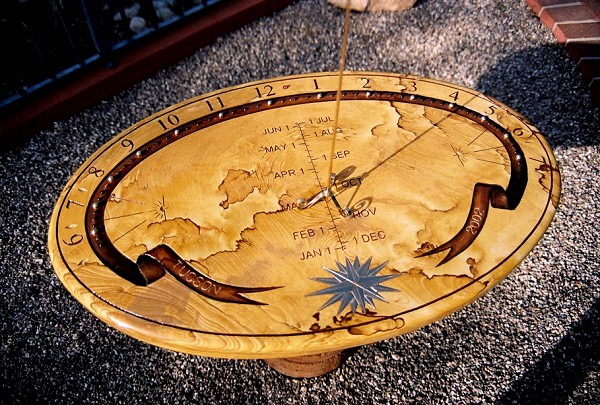
Analemmatic dials
Table-top analemmatic sundial with seasonal markers

John Carmichael made this beautiful table-top analemmatic dial from a slab of Picture Rock sandstone. An apt name! The ellipse is 80 x 50 cm (32 x 20 in.) and 5 cm (2 in.) thick, and rests on a pedestal. The gnomon is a gold plated tripod, 35 cm (14 in.) tall. The bottom tip of the gnomon allows it to be accurately set to the current date.
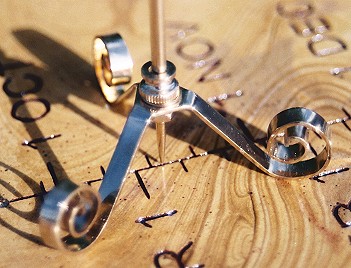
The inlaid hour points are gold plated brass spheres, the quarter-hour points are tiger-eye stones. The 16-pointed inlaid gold star at the bottom serves as an azimuth indicator, when the gnomon is placed over its center.
This is one of the two table-top analemmatic dials I know of, and the only one in my site. Just like its large relatives, it has the zest of interactivity: locating the correct date and moving the gnomon there to find the time. As John put it: "I think table-top versions are great! And actually, they are easier to make than horizontal dials because the gnomons are simpler."
There is even more to discover here: the seasonal markers on the major axis, the east-west line. The west marker is enlarged here:
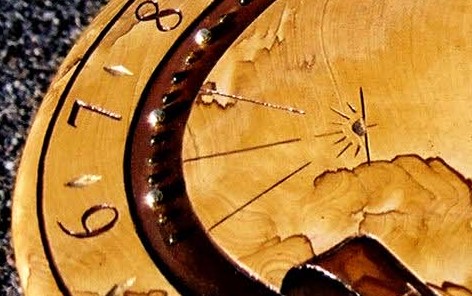
Roger Bailey from Canada invented this marker. Looking over the marker and a point on the date line shows you where the sun rises on that date. Looking the other way, over a point on the date line and then over the marker, you read the time of sunrise on that date from the hour ring. Conversely, the east marker tells you direction and time of sunset for a chosen date.
The readings so obtained are not mathematically correct, but at moderate latitudes the procedure works remarkably well.
The seasonal markers are not the foci of the ellipse. These may yield comparable data: a circular arc drawn through the foci and a point on the date line intersects the ellipse at the times of sunrise and sunset, and thereby also the directions. These circles are the Lambert circles, described in 1770. Lambert circles (green) and marker lines (blue) are compared in the following figure, from Roger Bailey's article in the NASS Compendium (vol.10 nr.3, 2003). The dial was designed for 36.9° N and a latitude correction of 2° (8 minutes).
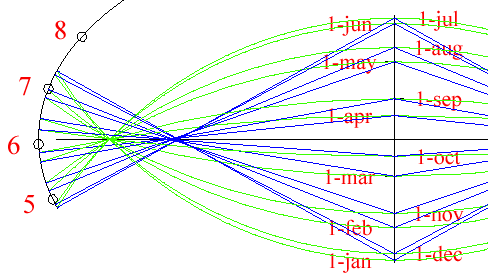
Location: 32.2° N, 111.0° W
Design: Sundial Sculptures, John L. Carmichael, Jr., Tucson (Arizona, USA)
Inauguration: 2002
Don't miss the Stained Glass Sundial website, designed and maintained by John Carmichael and Dave Bell. An excellent initiative!
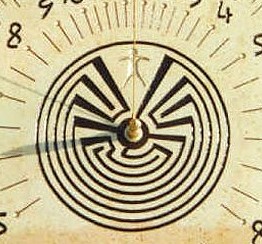 John offers a choice of designs to decorate the sundial face, many of native origin. The "Man in the Maze" is especially interesting. This classical labyrinth, with 7 paths and 8 walls around the goal, is a well-known pattern used in basket weaving by Indian tribes in the American Southwest.
John offers a choice of designs to decorate the sundial face, many of native origin. The "Man in the Maze" is especially interesting. This classical labyrinth, with 7 paths and 8 walls around the goal, is a well-known pattern used in basket weaving by Indian tribes in the American Southwest.
All photos on this page are © John L. Carmichael, Jr.